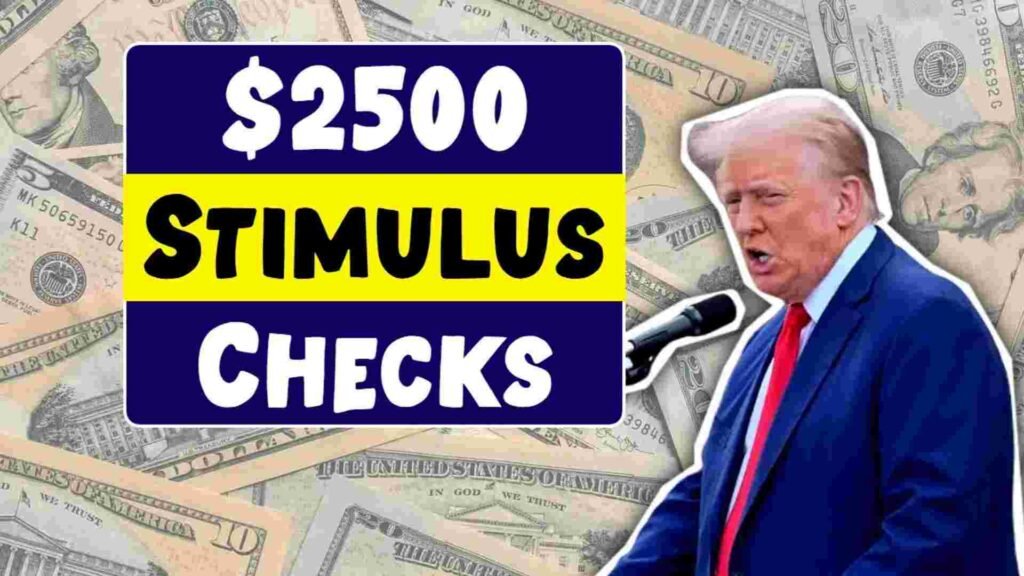As 2025 unfolds, whispers of a $2500 stimulus check have sparked curiosity and hope among Americans grappling with rising costs. From social media buzz to news headlines, the idea of a new round of financial relief has captured attention, especially for families feeling the pinch of inflation. But is this stimulus real, or just another rumor? In this article, we’ll dive into the facts, exploring the eligibility criteria, potential payment dates, and what this could mean for you. With economic uncertainty lingering, understanding the truth behind these claims is more important than ever. Let’s separate fact from fiction and get you the answers you need.
What Are the $2500 Stimulus Checks for 2025?
Background on Stimulus Payments
Stimulus checks have been a lifeline for many Americans during tough economic times. Starting with the CARES Act in 2020, the U.S. government rolled out multiple rounds of direct payments to help families manage financial strain, particularly during the COVID-19 pandemic. These payments, ranging from $600 to $1,400, supported millions by covering essentials like rent, groceries, and medical bills. Fast forward to 2025, and the conversation has shifted to a proposed $2500 stimulus check, fueled by ongoing inflation and rising living costs.
The 2025 Stimulus Proposal
The $2500 stimulus check is currently a proposal, not a confirmed program. Unlike the emergency-driven payments of 2020 and 2021, this initiative aims to provide broader economic support. Lawmakers are discussing it as a way to ease the burden of inflation, which has driven up the cost of everyday necessities. However, as of May 2025, no legislation has been passed, and the IRS has not confirmed these payments. The buzz stems from social media and unverified reports, creating both excitement and confusion.
Eligibility Criteria: Who Might Qualify?
Income Limits
If the $2500 stimulus check becomes reality, eligibility would likely mirror past programs. Based on previous stimulus rounds, here’s what we can expect:
| Filing Status | Full Payment (AGI) | Phase-Out Begins | Phase-Out Complete |
|---|---|---|---|
| Single | Up to $75,000 | $75,000 | $80,000 |
| Head of Household | Up to $112,500 | $112,500 | $120,000 |
| Married Filing Jointly | Up to $150,000 | $150,000 | $160,000 |
- Adjusted Gross Income (AGI): Your AGI from your 2023 or 2024 tax return would determine eligibility. Single filers earning up to $75,000 and joint filers earning up to $150,000 would likely receive the full amount.
- Partial Payments: Those earning above these thresholds might get a reduced payment, phasing out completely at higher incomes.
Other Requirements
- Citizenship/Residency: You’d need to be a U.S. citizen or legal resident with a valid Social Security number.
- Tax Filing: Filing a recent tax return (2023 or 2024) is typically required to verify income and eligibility.
- Dependents: Families with qualifying dependents, such as children under 17, might receive additional funds, similar to past stimulus structures.
- Government Program Recipients: Those enrolled in programs like Social Security, SSI, SSDI, or SNAP could automatically qualify if they meet income guidelines.
Special Considerations
- Seniors and Disabled Individuals: Proposals often prioritize low-income seniors (65+) and those receiving disability benefits, ensuring they’re included.
- Non-Filers: If you don’t typically file taxes, you might need to use the IRS’s Non-Filer Tool to claim the payment, as seen in previous rounds.
Payment Dates: When Could the Checks Arrive?
Timeline Speculation
Since the $2500 stimulus check isn’t confirmed, there’s no official timeline. However, if approved by mid-2025, payments could roll out within 1-2 months of legislation being signed, based on past IRS efficiency. Here’s a hypothetical schedule:
| Milestone | Estimated Date |
|---|---|
| Legislation Passed | July-August 2025 |
| Direct Deposits Begin | August-September 2025 |
| Paper Checks/Debit Cards | September-October 2025 |
- Direct Deposits: These would likely be the first to go out, hitting bank accounts within 2-3 weeks of approval.
- Paper Checks/Debit Cards: Mailed payments could take 1-3 months, depending on IRS processing and your banking status.
How Payments Would Be Distributed
The IRS would likely use the same system as before:
- Direct Deposit: Fastest method, using bank details from your latest tax return.
- Paper Checks: Sent to your address on file if no bank info is available.
- Prepaid Debit Cards: An option for those without bank accounts.
To avoid delays, update your IRS information (bank account, address) via the IRS website.
Why the Buzz? Economic Context
Inflation and Cost of Living
Inflation has been a persistent challenge, with grocery, housing, and healthcare costs climbing steadily. For low- and middle-income households, this erodes purchasing power, making a $2500 stimulus check an appealing prospect. The proposal reflects public demand for relief as wage growth lags behind price hikes.
Misinformation Risks
The hype around the $2500 stimulus has been amplified by social media and third-party websites, some spreading unverified claims to drive traffic. This can lead to false hope, with vulnerable individuals planning budgets around unconfirmed payments. Always check official sources like irs.gov or usa.gov for updates.
How to Prepare for a Potential Stimulus
Steps to Take Now
- File Your Taxes: Ensure your 2023 and 2024 tax returns are filed to provide the IRS with your income and banking details.
- Update IRS Info: Use the IRS website to update your address or bank account for faster delivery.
- Beware of Scams: The IRS never requests personal info via text, email, or phone. Ignore suspicious messages claiming to be from the IRS.
- Track Updates: Monitor irs.gov or trusted news outlets for legislative developments.
Claiming Missed Payments
If you missed earlier stimulus payments (e.g., the 2021 Recovery Rebate Credit), you can still claim them by filing a 2021 tax return before April 15, 2025. The IRS recently issued $2.4 billion to 1 million taxpayers who overlooked this credit.
Conclusion
The $2500 stimulus check for 2025 holds promise as a potential lifeline for Americans facing economic challenges, but it remains unconfirmed as of May 2025. While the idea of direct relief is exciting, it’s crucial to stay grounded in facts and avoid falling for rumors. If approved, the payment could help millions cover essentials and stimulate local economies. For now, prepare by keeping your tax information current and checking official IRS updates. By staying informed and cautious, you’ll be ready to act if this proposal becomes reality.
FAQs
Is the $2500 stimulus check confirmed for 2025?
No, the $2500 stimulus check is a proposal under discussion, not yet approved by Congress or confirmed by the IRS. Check irs.gov for updates.
Who would qualify for the $2500 payment?
Eligibility would likely include U.S. citizens or legal residents with AGI under $75,000 (single) or $150,000 (joint), based on recent tax returns. Seniors, disabled individuals, and those with dependents may also qualify.
When might payments be sent out?
If approved by mid-2025, direct deposits could start within 2-3 weeks, with paper checks following over 1-3 months. No official dates exist yet.
Will the payment be taxable?
Based on past stimulus checks, the $2500 payment would likely be non-taxable and not affect your tax refund or bill.
How can I avoid stimulus-related scams?
Never share personal info like your Social Security number or bank details in response to unsolicited calls, texts, or emails. Verify information through irs.gov.



